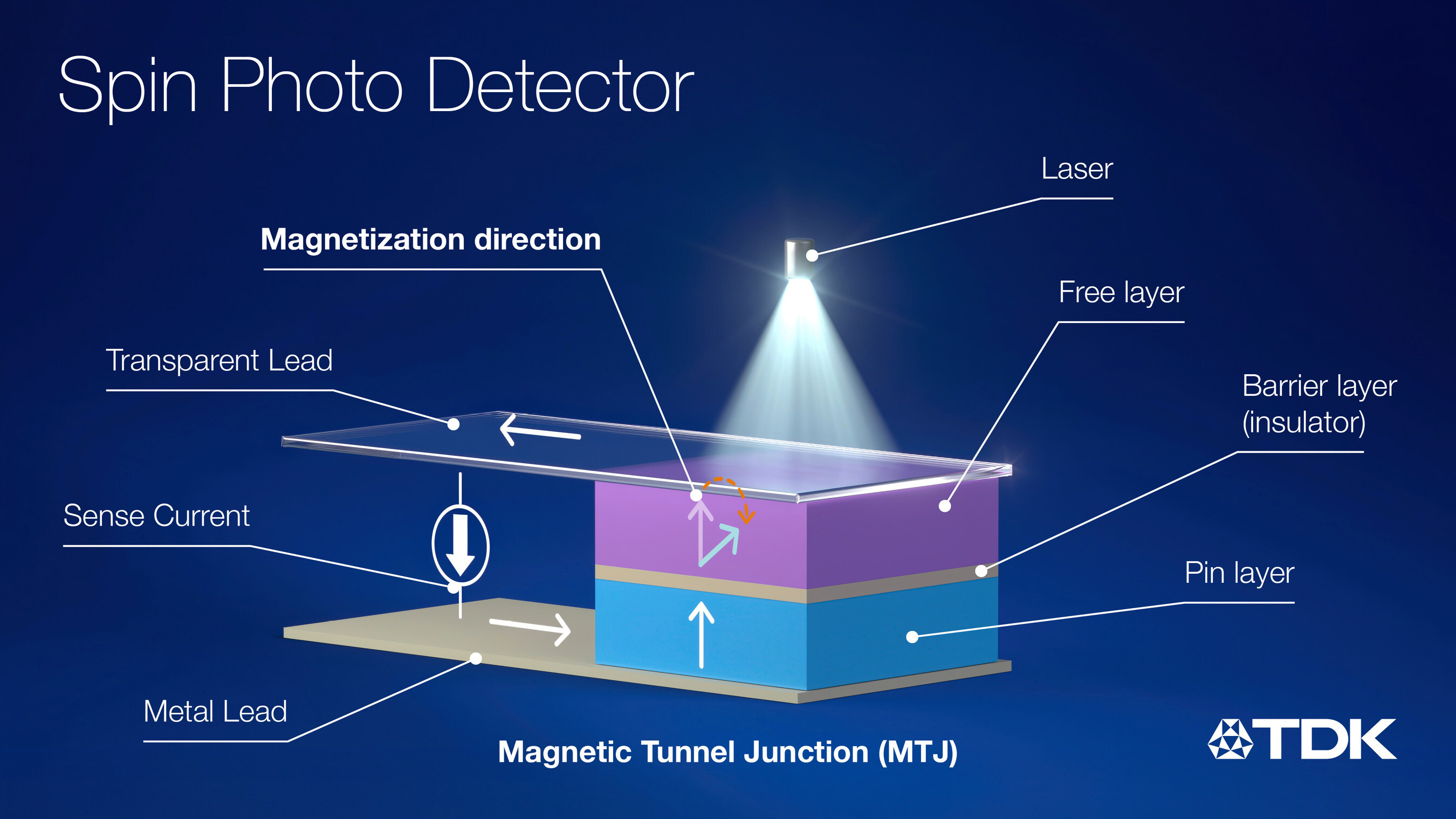TDK Unveils Spin Photo Detector for Faster AI Data Transmission

TDK Corporation has introduced the world's first Spin Photo Detector, capable of achieving data transmission speeds 10 times faster than conventional semiconductor-based photo detectors, announced in a press release. Developed in collaboration with Nihon University, this innovative device combines optical, electronic, and magnetic elements to respond at ultra-high speeds of 20 picoseconds using light with an 800 nm wavelength.
The Spin Photo Detector is designed to enhance data processing speed and reduce power consumption, which are critical for advancing AI applications. It operates effectively across a wide wavelength range, from visible light to near-infrared, and can be applied in fields such as optical communication and AR/VR technologies. TDK's adaptation of magnetic tunnel junction technology allows the device to function without the need for crystal growth on a single crystal substrate, offering flexibility in its application.
This breakthrough is expected to play a significant role in the evolution of AI by facilitating faster and more efficient data transfer, addressing the growing demand for high-speed optical communication in AI systems.
We hope you enjoyed this article.
Consider subscribing to one of our newsletters like Silicon Brief or Daily AI Brief.
Also, consider following us on social media:
More from: Data Centers
Subscribe to Silicon Brief
Weekly coverage of AI hardware developments including chips, GPUs, cloud platforms, and data center technology.
Whitepaper
Stanford HAI’s 2025 AI Index Reveals Record Growth in AI Capabilities, Investment, and Regulation
The 2025 AI Index by Stanford HAI provides a comprehensive overview of the global state of artificial intelligence, highlighting significant advancements in AI capabilities, investment, and regulation. The report details improvements in AI performance, increased adoption in various sectors, and the growing global optimism towards AI, despite ongoing challenges in reasoning and trust. It serves as a critical resource for policymakers, researchers, and industry leaders to understand AI's rapid evolution and its implications.
Read more
